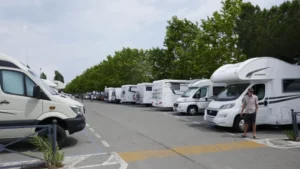Insulation
Material Choices
Choosing the right insulation material is pivotal in maintaining a warm interior in your caravan during winter. Materials such as fiberglass, foam boards, and reflective foil are popular choices due to their effective thermal resistance properties. Fiberglass is lightweight and easy to install, foam boards provide a high R-value (thermal resistance) per inch, and reflective foil can effectively block radiant heat, keeping the caravan warm. It’s crucial to consider factors like moisture resistance, ease of installation, and environmental impact when selecting insulation materials.
Insulation Areas & Window Insulation
Ensuring that all areas of the caravan are adequately insulated is vital to prevent heat loss. Walls, floors, and ceilings should be insulated with suitable materials to create a thermal barrier between the interior and the cold external environment. Additionally, windows can be a significant source of heat loss. Employing thermal curtains, double glazing, or even using plastic film insulation kits can help retain heat. Ensuring that all potential gaps and thermal bridges are addressed will optimize the caravan’s ability to retain heat.
Heating Solutions
Portable Heaters
Portable heaters can be a convenient and efficient way to heat a caravan. Electric heaters, gas heaters, and propane heaters are common choices, each with their own advantages and considerations. Electric heaters are safe and easy to use but may consume a lot of power. Gas and propane heaters can be more energy-efficient but require proper ventilation to prevent carbon monoxide buildup. Always ensure that the heater is positioned safely and away from flammable materials.
Built-In Heating Systems & Using Heated Blankets
Built-in heating systems, such as underfloor heating or a built-in furnace, provide consistent warmth throughout the caravan. These systems are typically more reliable and efficient than portable heaters but may require professional installation and maintenance. On the other hand, heated blankets provide direct warmth and can be an energy-efficient way to stay warm during sleep. Ensure that they are compliant with safety standards and always follow the manufacturer’s guidelines regarding usage and maintenance.
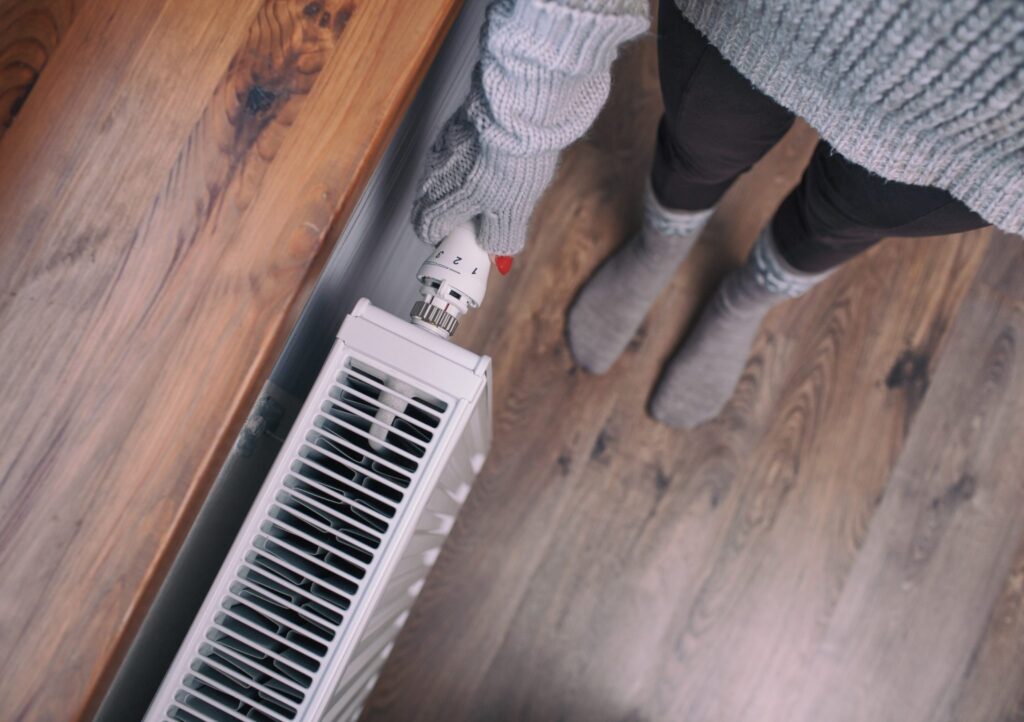
Preventing Condensation
Ventilation
Adequate ventilation is crucial to manage condensation within the caravan, as it allows moist air to escape and fresh air to circulate. Implementing roof vents, window vents, and ensuring that there is a consistent flow of fresh air will mitigate the buildup of moisture inside. However, it’s vital to balance ventilation with heat retention, ensuring that the caravan remains warm while preventing condensation.
Moisture Absorbers & Using Dehumidifiers
Utilizing moisture absorbers and dehumidifiers can actively reduce the moisture level inside the caravan. Moisture absorbers, which often contain calcium chloride, can be placed in various locations to draw moisture from the air. Dehumidifiers, on the other hand, actively extract water from the air and store it in a tank. Both methods can be effective in managing condensation, especially in areas prone to dampness like kitchens and bathrooms.
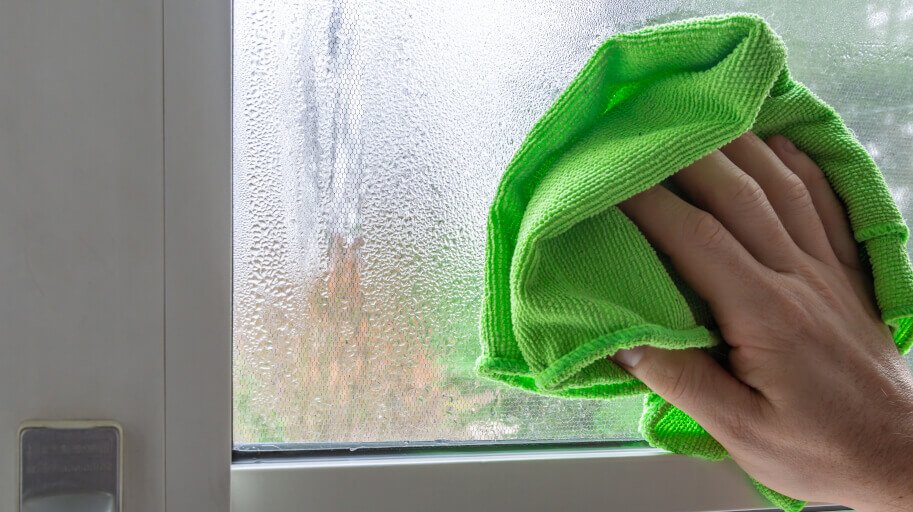
Weatherproofing
Sealing Gaps
Identifying and sealing gaps in the caravan’s structure is essential to prevent cold drafts and heat loss. Inspect the caravan thoroughly for any gaps, especially around windows, doors, and joints. Utilizing weather stripping, caulks, or sealants to address these gaps will enhance the caravan’s ability to retain heat and prevent unwanted air infiltration.
Using Skirts & Winter Awnings
Caravan skirts can be installed around the base of the caravan to prevent cold air from entering underneath, providing an additional insulation layer. They also help in stabilizing the internal temperature by minimizing the influence of the external environment. Winter awnings, made from robust and weather-resistant materials, can provide additional outdoor space while protecting the caravan from snow and ice. Ensure that they are securely installed to withstand winter weather conditions.
Clothing and Bedding
Appropriate Clothing
Wearing suitable clothing is fundamental in maintaining body warmth during winter caravan trips. Layering is key – utilizing a base layer to manage moisture, an insulating layer to trap heat, and an outer layer to protect against wind and rain will ensure comfort and warmth. Opt for materials like wool and synthetic fibers that provide good thermal properties and moisture management.
Winter Bedding & Using Thermal Wear
Investing in warm bedding, such as high-tog duvets, flannel sheets, and quality sleeping bags, will ensure a cozy sleep during chilly nights. Consider materials that have excellent insulating properties and are comfortable against the skin. Additionally, using thermal wear, such as thermal socks, leggings, and tops, can provide an extra layer of insulation, keeping you warm without adding bulk. Ensure that thermal wear is made from materials that are breathable and moisture-wicking to maintain comfort.
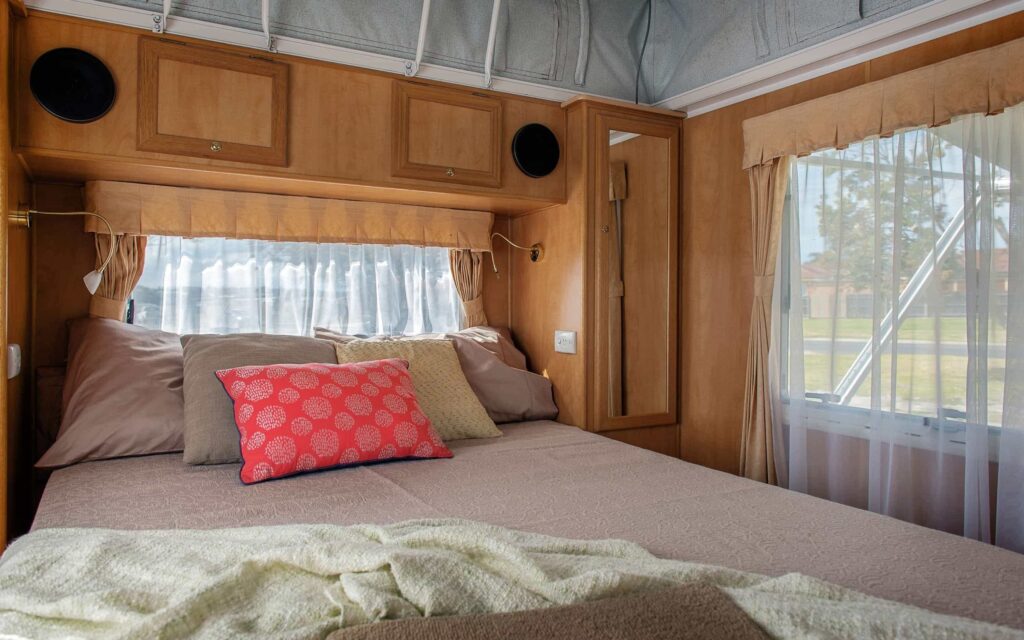
Safe Winter Travel
Driving in Snow
Navigating a caravan through snowy conditions demands meticulous preparation and cautious driving. Ensuring that your vehicle is equipped with winter tires, and carrying snow chains can provide additional traction on snowy and icy roads. Always check the weather forecast and road conditions before embarking on a journey. Adopt a defensive driving style, reducing speed, increasing following distance, and being mindful of black ice, especially during early mornings and late evenings.
Caravan Maintenance & Emergency Preparedness
Winter-specific maintenance of the caravan, including checking the heating system, ensuring all seals are intact, and verifying that the insulation is in good condition, is crucial to prevent issues during travel. Additionally, being prepared for emergencies is vital. This involves packing an emergency kit that includes items like extra food, water, warm clothing, blankets, and necessary tools. Ensure that you have a well-thought-out plan and are familiar with the route, including knowing the locations of safe stops and services.
Energy Management
Managing Power Usage
Effective power management is crucial to ensure that you have sufficient energy to keep the caravan warm and utilize essential appliances. This involves being mindful of the energy consumption of heating solutions, lighting, and other electrical devices. Consider using LED lighting, which is energy-efficient, and be strategic about when and how you use your appliances to conserve energy. If you’re relying on a battery, monitor its charge levels and have a plan for recharging it.
Using Solar Panels & Backup Power Options
Incorporating solar panels can provide a sustainable energy source, reducing reliance on external power sources and minimizing environmental impact. Ensure that the panels are positioned to maximize sunlight exposure and that the energy storage system is adequate for your needs. Additionally, having backup power options, such as generators or portable power banks, ensures that you have a reliable power source in case of unexpected outages or issues, providing peace of mind during your winter caravan adventures.
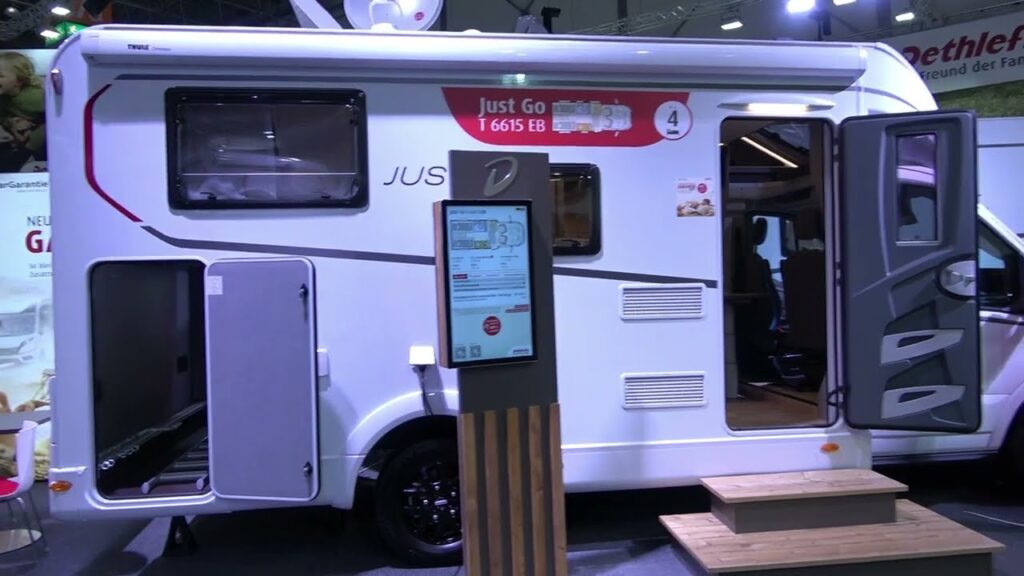
Cooking and Eating
Cooking Inside the Caravan
Cooking inside the caravan can provide both warmth and nourishment. Ensure that the cooking area is well-ventilated to prevent condensation and that all safety protocols are followed to prevent fire hazards. Utilize compact and efficient cooking appliances, and consider meals that are easy to prepare and clean up after. Being mindful of smells and moisture generated during cooking is also crucial to maintain a comfortable interior environment.
Winter Recipes & Storing Food
Offering a selection of winter recipes that are not only warming but also easy to prepare in the confined space of a caravan can be a delightful addition to your article. Think about one-pot meals, stews, and hot drinks that can provide comfort and warmth. Additionally, providing tips on storing food in winter, such as preventing items from freezing and managing limited storage space efficiently, will be beneficial for readers planning extended caravan trips.
Health and Safety
Avoiding Carbon Monoxide Poisoning
Carbon monoxide (CO) poisoning is a serious risk when using fuel-burning appliances inside the caravan. Ensuring proper ventilation, regular maintenance of heating appliances, and utilizing a CO detector can mitigate this risk. Educate readers on the symptoms of CO poisoning and the immediate actions to take if poisoning is suspected. Emphasize the importance of safety and adherence to guidelines when using any heating appliances inside the caravan.
Staying Healthy & First Aid
Maintaining health during winter travels involves managing warmth, ensuring nutritious food intake, and staying active to promote circulation. Provide tips on exercises that can be done within or around the caravan and advice on maintaining a balanced diet while on the road. Additionally, having a well-stocked first aid kit, tailored for winter needs, is crucial. Include items like thermal blankets, rehydration salts, and any personal medications, ensuring that you’re prepared for minor injuries or illnesses.
Legal and Ethical Considerations
Winter Camping Laws
Understanding and adhering to winter camping laws and regulations is essential for a trouble-free caravan experience. This might involve adhering to specific travel restrictions, utilizing designated camping areas, and complying with local guidelines regarding waste disposal and environmental conservation. Ensure that you research and communicate accurate and location-specific legal information to provide valuable guidance to your readers.
Ethical Camping & Community Relations
Promoting ethical camping practices, such as minimizing waste, respecting wildlife, and adhering to the “leave no trace” principle, ensures that caravaners have a minimal impact on the environment. Additionally, maintaining positive relations with local communities and other campers is crucial for a harmonious experience. Respect local customs, be mindful of noise levels, and engage in friendly and considerate interactions to foster a positive camping community and ensure that caravaners are welcomed back in the future.
Conclusion
Embarking on a winter caravan adventure intertwines the serenity of a snowy landscape with the cozy warmth of a well-prepared mobile abode. The amalgamation of practical strategies, from meticulous insulation to adept energy management, not only ensures a snug and comfortable environment but also safeguards caravaners against the harshness of winter’s chill. As we’ve navigated through the multifaceted aspects of keeping a caravan warm, the intertwining threads of safety, convenience, and respect for the environment have persistently surfaced, weaving a tapestry that illustrates a mindful and enjoyable winter caravanning experience.
In the crystalline silence of a winter’s night in the caravan, the knowledge that every possible measure has been taken to ensure warmth, safety, and respect for the environment and fellow travelers, bestows a peace of mind that is immeasurably comforting. The amalgamation of practical advice, technical solutions, and ethical considerations presented in this article aims to be a beacon of guidance for both novice and seasoned caravaners alike, navigating through the winter wonderlands. May your journeys be warm, your experiences be rich, and your memories be eternally cherished, as you traverse through the enchanting, snowy landscapes with your caravan, safeguarded by the shield of thorough preparation and mindful practice.

